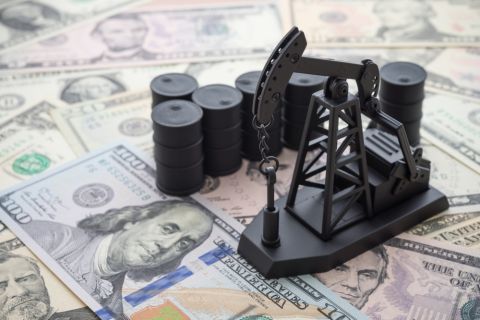
Editor’s note: Opinions expressed by the author are his own.
If I’ve learned anything during my quarter century of covering the energy industry, it’s this: energy development is risky from both physical and financial perspectives. You can’t solve a difficult challenge by throwing huge amounts of money into it. President Obama learned that painful lesson with the $500 million-dollar federal subsidy to the failed Solyndra solar project.
We’re a couple weeks past the “Green New Deal” resolution proposed Feb. 7 by freshman Congresswoman Rep. Alexandria Ocasio-Cortez, (D-N.Y.), and Sen. Ed Markey, (D-Mass.). One tenet of the non-binding resolution calls for a zero-carbon economy by 2030, eventually leading to the dismantlement of the oil and gas industry while gradually phasing out nuclear power.
So far, most of the comments have centered around some misinterpreted comments from a FAQ backgrounder that cited the difficulty “to fully get rid of, for example, emissions from cows or air travel before then.”
Forget about farting cows. Our standard of living is at stake.
GND would be modeled after FDR’s New Deal in which the federal government took the leading public role in raising America from the Great Depression. Add the costs of post-World War II Marshall Plan and the moon project of the 1960s to get an idea of the scope of their undertaking to create a new energy world based on renewables, i.e., wind and solar. We’re talking trillions and trillions of dollars here with no guarantee of success.
Wind and solar remain intermittent sources of energy without storage capacity yet require very large footprints. Want to rely on just wind and solar to survive a New England winter? Something else to consider: China owns the market on solar panels and most key components for wind turbines are also imported from the Far East. Meanwhile, there would be the loss of millions of well-paying American jobs directly and indirectly related to oil and gas.
GND, however, takes that into account, suggesting they would be replaced with millions of government- subsidized jobs designed to transition the economy into this new energy world.
They say their goal, in the name of climate change, is to “achieve net-zero greenhouse gas emissions rather than zero emissions” in 10 years. “We think we can ramp up renewable manufacturing and power production, retrofit every building in America, build the smart grid, overhaul transportation and agriculture, plant lots of trees and restore our ecosystem to get to near zero.”
How do you retrofit every building in the country? Maybe the former oil and gas workers could rip out all of those heating and cooling systems while petroleum engineers are re-educated to design the new energy systems. Perhaps by then we’ll actually have developed a usable fuel cell?
They want to “totally overhaul transportation by massively expanding electric vehicle manufacturing, build charging stations everywhere, build out highspeed rail at a scale where air travel stops becoming necessary, create affordable public transit available to all, with [the] goal to replace every combustible-engine vehicle.”
What would power those charging stations if the wind isn’t blowing or the sun isn’t shining that day?
A number of Democrats, mindful of the 2020 presidential election, have quickly signed onto their manifesto. Energy has always been a hot-button topic—can’t live with it, can’t live without it—just keep it cheap. But the proposal is so extreme that it even left House Speaker Nancy Pelosi shaking her head, telling newsmen that “it will be one of several or more suggestions that we receive…. The green dream or whatever they call it…nobody knows what it is, but they’re for it, right?”
Understand also that Ocasio-Cortez and Markey come from population-dense regions of the country where public transportation has long been established and for many driving and parking a vehicle is not worth the effort. But we live in a very large country where most people do not live in or near major population centers and need to drive to work and elsewhere. That’s always explained to me why The New York Times has always advocated against the petroleum industry. Just hop on the subway and you’re ready to go. In fact, in January 2007, Times’ Pulitzer Prize-winning columnist Thomas Friedman used that very phrase in a column advocating for such a massive program.
I’ve never gotten over the irony that climate change didn’t seem to become a serious threat until America’s energy revolution brought us to the point of self-sufficiency—something none of us thought possible. Questions remain about the cause and effect of climate change but most of the world’s scientists are convinced this is a real problem that won’t disappear by itself.
Just as President Obama was forced to embrace the value of natural gas, the world’s major oil and gas companies have steadily reduced emissions while acknowledging the need to display greater corporate responsibility. If private investment in oil and gas grinds to a halt, what incentive would the industry have to continue to work to a cleaner environment? And where would we be in 2030 if we don’t have a renewables-based economy?
There are no brash and politically expedient solutions. Perhaps this president or the next will decide to appoint a blue-ribbon panel of our greatest minds to conduct a serious study. The question they need to help answer is the cost of the cure and what we, as a society are willing to sacrifice.
What do you think? Let us know at editorial@hartenergy.com.
Recommended Reading
What's Affecting Oil Prices This Week? (April 1, 2024)
2024-04-01 - Stratas Advisors forecasts that OPEC+ will continue to manage supply in a proactive manner while non-OPEC supply growth is expected to be more modest during 2024 and 2025 than seen in 2023.
What's Affecting Oil Prices This Week? (Feb. 26, 2024)
2024-02-26 - Stratas Advisors forecast that global crude production will be essentially unchanged from 2023, which means that demand growth in 2024 will outpace supply growth.
What's Affecting Oil Prices This Week? (March 11, 2024)
2024-03-11 - Stratas Advisors expects oil prices to move higher in the middle of the year, but for the upcoming week, there is no impetus for prices to raise.
What's Affecting Oil Prices This Week? (March 25, 2024)
2024-03-25 - On average, Stratas Advisors are forecasting that oil supply will be at a deficit of 840,000 bbl/d in 2024.
What's Affecting Oil Prices This Week? (March 18, 2024)
2024-03-18 - On average, Stratas Advisors predicts that supply will be at a deficit of 840,000 bbl/d during 2024.





